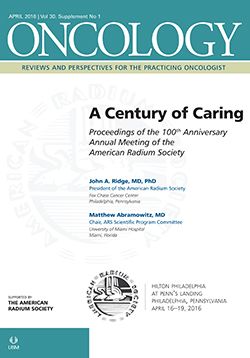(P030) Efficacy of Stereotactic Radiosurgery (SRS) for Brain Metastases: Is There a Difference in Survival Between First and Second Brain Metastatic Event?
Despite better performance status noted for patients treated with stereotactic radiosurgery for first brain metastatic event compared with second brain metastatic event, no difference in survival was noted.
Shaharyar Ahmad, Royce Brown, Anthony Ricco, Rachelle Lanciano, MD, Luther Brady, MD; Drexel University College of Medicine; Philadelphia CyberKnife; Sidney Kimmel Medical College, Thomas Jefferson University
PURPOSE: To document survival for patients treated with stereotactic radiosurgery (SRS) for brain metastases either at initial presentation or for salvage in conjunction with other known prognostic factors.
METHODS: All patients treated for brain metastasis with SRS (January 2006–October 2013) were reviewed. We identified 150 patients treated for either first brain metastatic event (FBME) or second brain metastatic event (SBME), excluding 14 patients who received SRS for both. Age, gender, primary cancer type, presence of extracranial metastases, number of brain metastases, initial site of metastases, recursive partitioning analysis (RPA), and Karnofsky performance status (KPS) were documented.
RESULTS: Primary cancers included lung (n = 83), breast (n = 20), melanoma (n = 13), and other (n = 34). Patients treated with SRS for FBME were significantly older (63.59 yr vs 58.78 yr; P = .03) with a higher RPA index (38.3% vs 19.5% RPA 3; P = .0002), greater female predominance (61% vs 37%; P = .0035), and more primary melanoma (15.6% vs 1.4%; P = .014) compared with those treated for SBME. There was no significant difference in 1-year (29%) and 2-year (12%–13%) actuarial or median survival (5.95 mo and 6.77 mo, respectively) for patients treated with SRS for FBME vs SBME. A Cox regression model revealed KPS and RPA to be significant at the P < .05 level for survival. Multivariable analysis utilizing manual backward selection considering all factors revealed RPA (P = .007) and KPS (P ≤ .001) to be the only independent prognostic factors for survival. Patients with RPA 1 had a 62% decreased hazard of death vs those with RPA 3, with 1-year survival rates for RPA 1, RPA 2, and RPA 3 patients of 36.5%, 33.3%, and 17.1%, respectively.
CONCLUSIONS: Despite better performance status noted for patients treated with SRS for FBME compared with SBME, no difference in survival was noted. Aggressive treatment should be considered for patients with high performance status, regardless of whether they present with FBME or SBME.
Proceedings of the 98th Annual Meeting of the American Radium Society - americanradiumsociety.org
